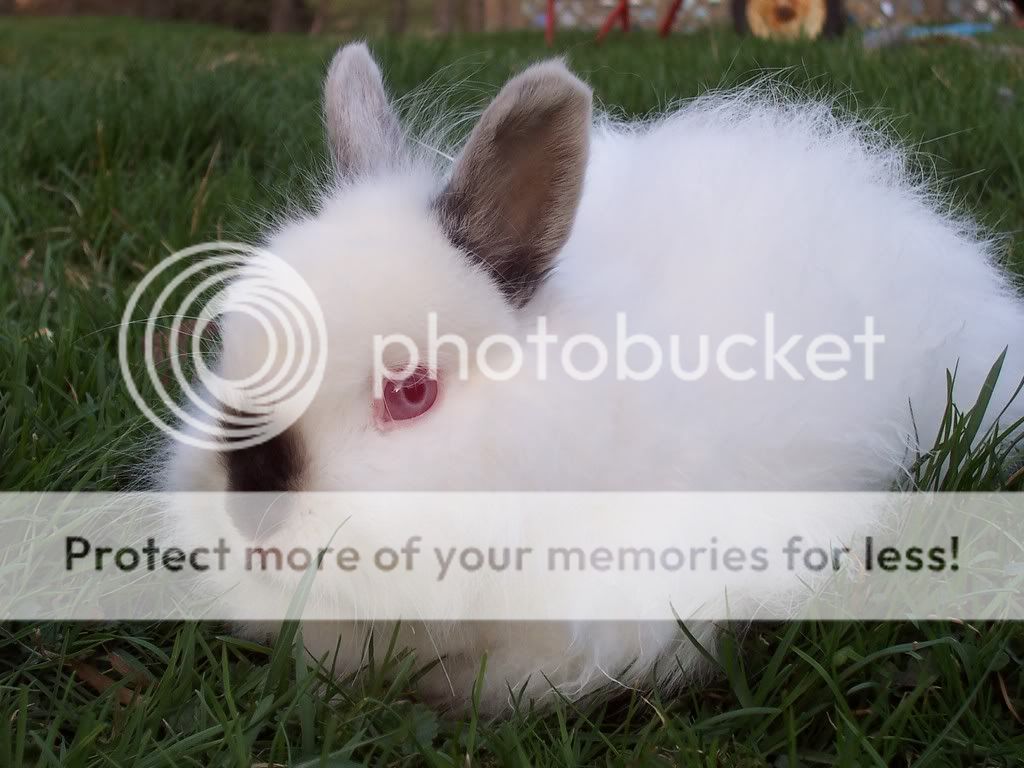Navigation
Install the app
How to install the app on iOS
Follow along with the video below to see how to install our site as a web app on your home screen.
Note: This feature may not be available in some browsers.
More options
You are using an out of date browser. It may not display this or other websites correctly.
You should upgrade or use an alternative browser.
You should upgrade or use an alternative browser.
Need photography advice!!
- Thread starter chickbea
- Start date
More options
Who Replied?You can turn on the lights in a room or go outside where its bright and turn the flash off. I have also heard of taping plastic wrap over the flash to get rid of red eye but I've never tried it myself. If you have a good picture with red eye it can always be taken care of with photo shop or other photo programs. Since you like bunnies I have to share a pic of my old rabbit, Ralph.


- Thread starter
- #4
Red-eye occurs when light from the built-in flash of a camera bounces off the subject's retinas and reflects back to the camera lens. Along the way, the light takes on the tint of the blood vessels in the eye, which causes the eyes to appear to be glowing red in the picture. In animal pictures, eyes often have a white, yellow, or green glint.
A couple of tactics help reduce - but may not entirely eliminate - red-eye:
Indoors, turn on as many lights as possible. In response to the additional light, your subject's eyes will constrict a little, so less flash light will be reflected back to the lens. Most cameras also adjust flash output based on the ambient room lighting, so the brighter the setting, the weaker the flash needs to be. If you're shooting indoors during daylight, position your subjects next to a window. The daylight coming through the window will have the same effect as turning on additional room lights.
Switch the flash to red-eye reduction mode. In red-eye reduction mode, the camera fires a brief, preflash light in advance of the main flash. The idea is the same as turning on lots of room lights - the eyes constrict in response to the preflash so that when the main flash fires, less light is reflected from the retinas. Keep in mind, though, that it's called red-eye reduction and not red-eye prevention mode for a reason: That little preflash can do only so much, so you may still wind up with some red-eye areas.
Consider posing your subjects so that they're not looking directly into the camera lens. Because the flash light won't be heading straight for the eyes, red-eye reflections will be minimized.
Happy shooting!
A couple of tactics help reduce - but may not entirely eliminate - red-eye:
Indoors, turn on as many lights as possible. In response to the additional light, your subject's eyes will constrict a little, so less flash light will be reflected back to the lens. Most cameras also adjust flash output based on the ambient room lighting, so the brighter the setting, the weaker the flash needs to be. If you're shooting indoors during daylight, position your subjects next to a window. The daylight coming through the window will have the same effect as turning on additional room lights.
Switch the flash to red-eye reduction mode. In red-eye reduction mode, the camera fires a brief, preflash light in advance of the main flash. The idea is the same as turning on lots of room lights - the eyes constrict in response to the preflash so that when the main flash fires, less light is reflected from the retinas. Keep in mind, though, that it's called red-eye reduction and not red-eye prevention mode for a reason: That little preflash can do only so much, so you may still wind up with some red-eye areas.
Consider posing your subjects so that they're not looking directly into the camera lens. Because the flash light won't be heading straight for the eyes, red-eye reflections will be minimized.
Happy shooting!
You can also try covering the flash with tissue paper to diffuse it. That has worked well for me in the past with a camera that had a flash I had no control over otherwise. I just cut a piece of white tissue paper larger than the flash and taped it over. I left it on there for some months, because that camera ALWAYS produced red-eye otherwise.
(Sakura's mom)
(Sakura's mom)
Last edited:
New posts New threads Active threads
-
Latest threads
-
-
-
Anyone, Blue Orpington x barred rock or x buff Orpington?
- Started by Alethea1125
- Replies: 1
-
-
-
Threads with more replies in the last 15 days
-
Heater or heat panel -10
- Started by IowaCHKN
- Replies: 155
-
-
-
Introducing TUDYBOOK - The Tudy Coloring Book Generator
- Started by Nifty-Chicken
- Replies: 51
-
-
×

